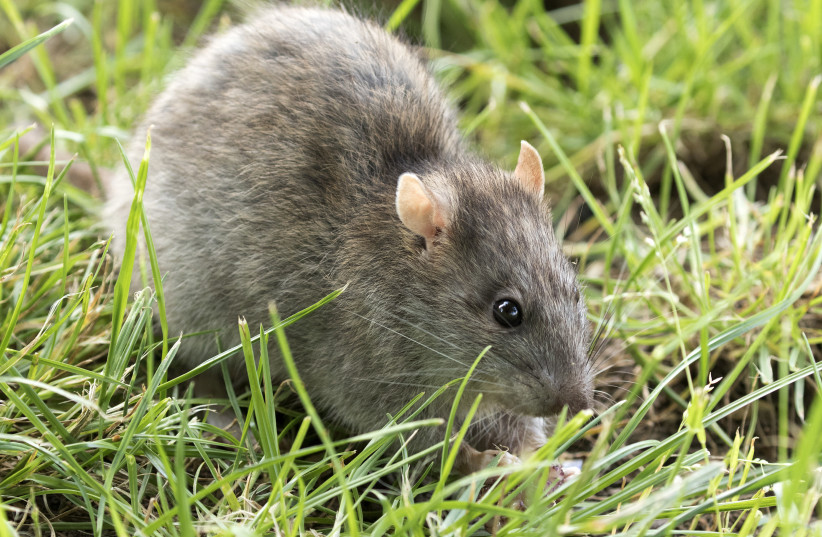Explaining the subjective experience of time that he studied to write his Theory of Relativity, Albert Einstein famously quipped: “Put your hand on a hot stove for a minute, and it seems like an hour. Sit with a pretty girl for an hour, and it seems like a minute.”
How do we perceive and understand time? The theory of relativity argues that time can stretch and contract, a phenomenon known as time dilation. Just as the cosmos warps time, our neural circuits can stretch and compress our own experience of time.
In new work from Champalimaud Research’s Learning Lab in Lisbon, Portugal that has been published in the journal Nature Neuroscience under the title “Using temperature to analyze the neural basis of a time-based decision,” scientists artificially slowed down or sped up patterns of neural activity in rats. This warped their judgment of time duration and provided the most compelling causal evidence until now for how the brain’s inner clockwork guides behavior.
In contrast to the more familiar circadian clocks that govern our 24-hour biological rhythms and shape our daily lives from sleep-wake cycles to metabolism, much less is known about how the body measures time on the scale of seconds to minutes. The study focused precisely on this seconds-to-minutes timescale at which much of our behavior unfolds, whether you’re waiting at a stop light or serving a tennis ball.
Unlike the exact ticking of a computer’s centralized clock, our brains maintain a decentralized and flexible sense of time, thought to be shaped by the dynamics of neuronal networks dispersed across the brain. In this “population clock” hypothesis, our brains keep time by relying on consistent patterns of activity evolving in groups of neurons during behavior.

Neuroscientist Joe Paton, the study’s senior author, compared this to dropping a stone into a pond. “Each time a stone is dropped, it creates ripples that radiate outward on the surface in a repeatable pattern. By examining the patterns and positions of these ripples, one can deduce when and where the stone was dropped into the water. Just as the speed at which the ripples move can vary, the pace at which these activity patterns progress in neural populations can also shift. Our lab was one of the first to demonstrate a tight correlation between how fast or slow these neural ‘ripples’ evolve and time-dependent decisions.”
Training rats to distinguish between different time intervals
The researchers trained rats to distinguish between different intervals of time. They found that activity in the striatum, a deep brain region, follows predictable patterns that change at different speeds – when animals report a given time interval as longer, the activity evolves faster, and when they report it as shorter, the activity evolves more slowly.
But correlation does not imply causation. “We wanted to test whether variability in the speed of striatal population dynamics merely correlates with or directly regulates timing behavior. To do that, we needed a way to experimentally manipulate these dynamics as animals reported timing judgments.”
By providing new insights into the causal relationship between neural activity and timing function, the team’s results may advance the development of novel therapeutic targets for debilitating diseases such as Parkinson’s and Huntington’s that involve time-related symptoms and compromised striatum. Additionally, by highlighting a more specific role for the striatum in discrete, as opposed to continuous, motor control, the results could also influence algorithmic frameworks used in robotics and learning.
“Never throw away old tools”, said biotechnologist Dr. Tiago Monteiro, one of the study’s lead authors. To establish causation, the team turned to an old-school technique in the neuroscientist’s toolbox – temperature. “It has been used in previous studies to manipulate the temporal dynamics of behaviors such as bird song. Cooling a specific brain region slows down the song, while warming speeds it up, without altering its structure. It’s akin to changing the tempo of a musical piece without affecting the notes themselves. We thought temperature could be ideal as it would potentially allow us to change the speed of neural dynamics without disrupting its pattern.”
To test this tool in rats, they developed a custom thermoelectric device to warm or cool the striatum focally while simultaneously recording neural activity. The rats were anesthetized so the researchers used optogenetics - a technique that uses light to stimulate specific cells - to create waves of activity in the otherwise dormant striatum, much like dropping the stone into the pond. They found that cooling dilated the pattern of activity, while warming contracted it without upsetting the pattern itself.
“Surprisingly,” added Paton, “even though the striatum coordinates motor control, slowing down or speeding up its patterns of activity doesn’t correspondingly slow down or speed up the animals’ movements in the task. This got us thinking more deeply about the nature of behavior control in general. Even the simplest organisms face two fundamental challenges when it comes to controlling movement. First, they have to choose from among different potential actions such as whether to move forward or backward. Second, once they’ve chosen an action, they need to be able to adjust and control it continuously to ensure it’s carried out effectively. These basic problems apply to all kinds of organisms, from worms to humans.”
The team members are now exploring the cerebellum that houses more than half of the brain’s neurons and is associated with continuous, moment-by-moment execution of our actions. “Interestingly,” Paton concluded, “our preliminary data shows that applying temperature manipulations to the cerebellum, unlike the striatum, does affect continuous movement control.”
